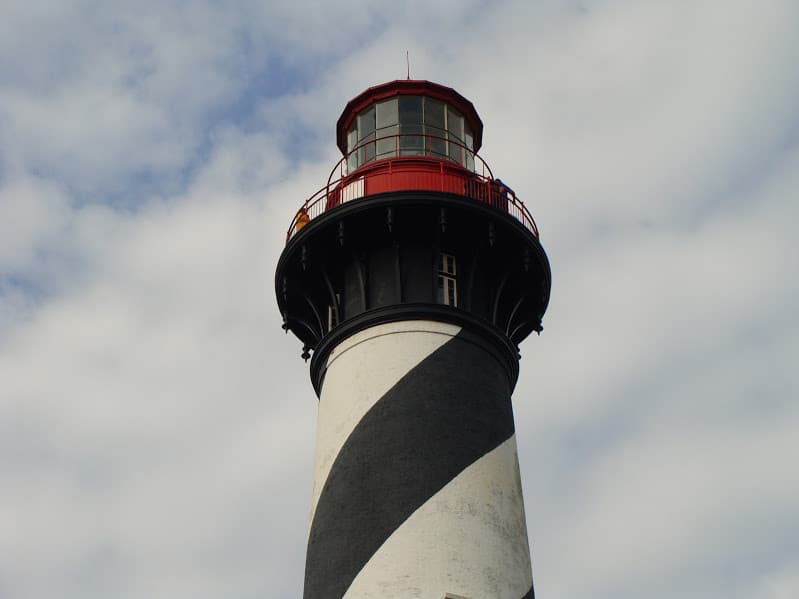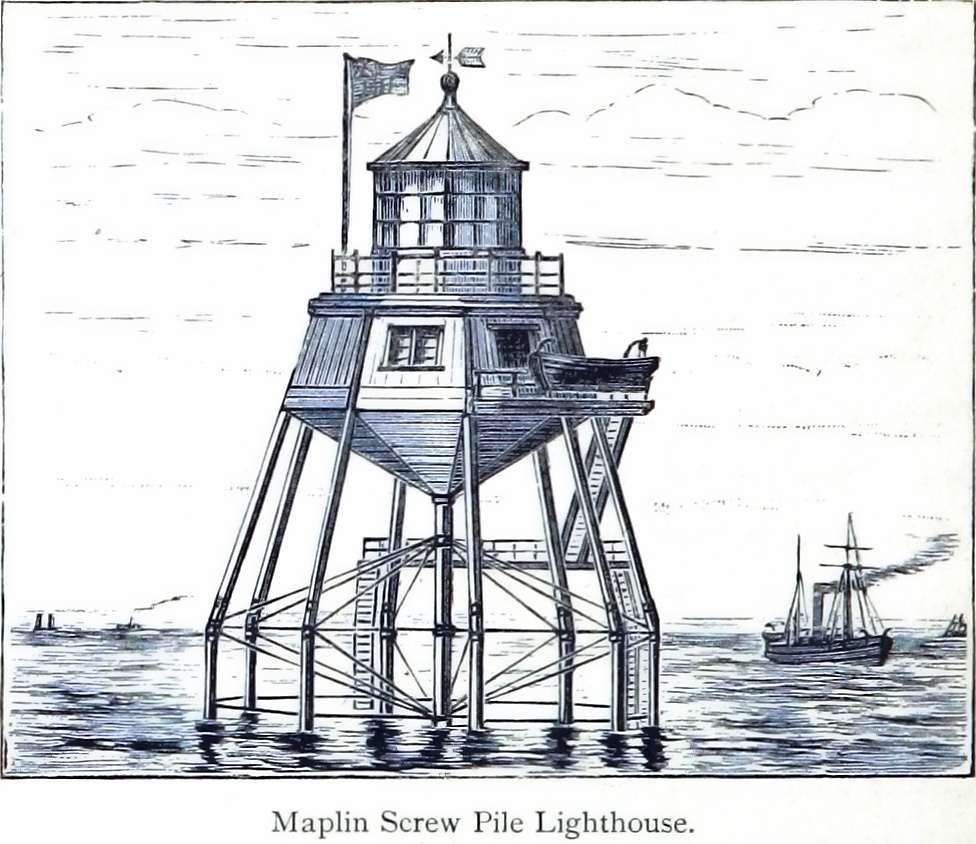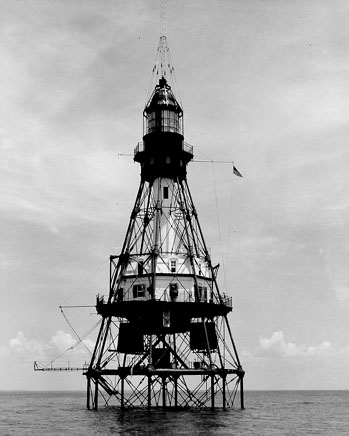Lighthouse Series-History
Definition: A lighthouse is a tower, building, or other types of structure designed to emit light from a system of lamps and lenses and to serve as a navigational aid for maritime pilots at sea or on inland waterways.

History of the Lighthouse
Lighthouses stand as guiding lights to help those out to sea find their way back to shore. They also serve as a warning against hazards, such as; shallow water, reefs, and rocks. The history of the lighthouse goes back to Rome and the 5th Century BC. The first lighthouse is said to have been at Piraeus connected to Athens and was essentially a small stone column with a fire beacon. During the middle ages, most Roman lighthouses fell into disuse, some remained functional like the Tower of Hercules. The Tower of Hercules(Galician and Spanish: Torre de Hércules) stands (180 ft) tall and overlooks the North Atlantic coast of Spain. The structure, built in the 2nd century and renovated in 1791, is the oldest lighthouse in use today.

I’m going to be writing mainly about modern lighthouses built in America. The modern era of lighthouses began at the turn of the 18th century. The first modern lighthouse in America was the Boston Light, it was built in 1716 at Boston Harbor. Lighthouses were soon built along the coast from Delaware to North Carolina were navigation was treacherous. They were first built of wood but were soon changed to Masonry to avoid the fire hazard. The oldest Masonry Lighthouse still standing is the Sandy Hook lighthouse it was built in 1764 in New Jersey, it is also the oldest “Working” lighthouse in the United States.

Construction
A screw-pile lighthouse is a lighthouse that stands on piles that are screwed into sandy or muddy sea bottoms. In the United States, many screw-pile lighthouses were built in the Chesapeake bay due to its soft bottom. The construction is a 1 1/2 story wooden building with dormers(a dormer is a roofed structure, often containing a window, that projects vertically beyond the plane of a pitched roof) and lightroom. The first of this type built in the United States was at Brandywine Shoal, Delaware Bay, completed in 1850.

There are still some surviving examples of the screw-pile lighthouse standing today;
- Carysfort Reef Light, Key Largo, Florida, Built 1852
- Seven Foot Knoll Light, Patapsco River, Maryland, Built 1856
- Thomas Point Shoal Light, in the Chesapeake Bay, a historic lighthouse and most recognized in Maryland
- Drum Point Light, Patuxent River, Maryland, now at the Calvert Marine Museum
- Hooper Straight Light, Tangier Sound, Now at Chesapeake Bay Maritime Museum
- Roanoke River Light, built 1877, only surviving Screw-Pile Lighthouse in North Carolina
- Fowey Rocks Light, built 1878, south miles south of Key Biscayne, Florida
- American Shoal Light, built 1880, located east of Saddlebunch Keys in the Florida Keys
- Middle Bay Light, built 1885, Alabama’s Mobile Bay
The screw-pile lighthouses on the reefs off Florida are tall Skeletal structures.

By United States Coast Guard – http://www.uscg.mil/history/weblighthouses/fowey.JPG, Public Domain, https://commons.wikimedia.org/w/index.php?curid=4624399
Lighting Improvements
The first source of illumination in the lighthouse was wood pyres or burning coal. The Argand lamp, which was invented in 1782, revolutionized lighthouse illumination with a steady smokeless flame. This lamp used, whale oil, olive oil or other vegetable oil as fuel. It became the standard for lighthouses for over a century.

The vaporized oil burner was invented in 1901, the fuel was vaporized at high pressure and burned to heat the mantle, giving an output of over 6 times the luminosity of standard oil lights. The use of gas as an illuminant became widely available, as did the use of the “sun valve”, which automatically regulated the light and turned it off during the daytime. This technology was the main form of light sources in lighthouses from 1900-1960 when electric lighting became dominant.
The Fresnel Lens was invented by Augustin-Jean Fresnel and first used in 1823. The Fresnel Lens increased luminosity of the Lighthouse lamp by a factor of four, and his system is still in use today.

Jaro Nemčok / CC BY-SA (https://creativecommons.org/licenses/by-sa/3.0)
This is just a brief overview of the History of the Lighthouse. I find lighthouses to be majestic and inspirational! Not only are they found along the coasts, but also along the Great Lakes. Next in my series, I will write about specific lighthouses in each state. Please share and comment, and check back soon for more on Lighthouses, “Guiding Lights”



I love lighthouses! I try to make sure to put them into our travel itineraries. I find them interesting and love to read about their history!
I love them too! I have written a post on the Outer Bank lighthouses and am working on another one too!
Lighthouses are amazing to visit, I’ve been to many and think that my all-time favorite is Sambro Island Lighthouse in Nova Scotia! Thanks for sharing 🙂
Thanks for reading!
I love lighthouses…so much beauty and h istory
Thanks! I love them too!
Lighthouses are so cool. Thank you for sharing
Thanks!
Lighthouses are soooooo cool! Thanks for sharing!
Thanks for reading!
Beautiful pictures and descriptions. I love to tour lighthouses too.
Thanks for reading!
This is awesome! Lighthouses are so beautiful!
Thanks for reading!
I did not know any of these things prior to reading this. I believe that lighthouses are fascinating.
Thanks! I agree!
Living in Illinois I don’t see as many lighthouses as I would like but love reading this and dreaming! Might need to plan a vacation just to explore them!
There are lighthouses in Illinois, I think around Chicago on Lake Michigan. Hope you get to see some!!
The screw-pile lighthouse looks wild!!
I know…right! Thanks!
Great info! I have always had a fascination with lighthouses
Thanks! Me too!!
I love reading about the history of lighthouses! I have always used a lighthouse as a symbol for people to be like, I say this all the time: “Shine your light and help people out of the darkness without judging!” Holly Bird
That’s awesome!
What an interesting read! We visit many on the East Coast but had not really considered the history.
Thanks for reading!
Very interesting!
I knew very little about lighthouses before reading this.
Thanks! I hope to continue this series..
Such interesting history of lighthouses!
Thanks for reading!
I absolutely love all of the history you provide in your posts. We have many lighthouses here in Maine so it’s good to learn a little more.
Thanks! I am jealous, I would love to see the lighthouses in Maine! Maybe some day..
Living in New England we have our fair share lighthouses, Each is so beautiful and unique. Do you have a favorite?
That’s a good question! We have some pretty ones along the North Carolina Coast. I am intrigued by the one on Bald Head Island, they call it “Old Baldy”, I haven’t seen it up close yet.
An interesting post about some different types of lighthouses
Thanks
We love visiting lighthouses. Thanks for all the great info.
Thanks! Do you have a favorite lighthouse?
Lighthouses are so amazing! We have explored a couple and are looking forward to viewing more. Thank you for sharing.
Thanks! Do you have a favorite lighthouse?
Very impressive. Guess I had never considered the history of lighthouses. Very informative.
Thanks!
I have always loved lighthouses and have seen many in various parts of the U.S. I loved learning a bit more about the history of the lighthouse.
Thanks
I love light houses. I have to visit them when I am vacationing on the coast.
Thanks for reading!
I was not aware of the different construction types. Great info before we go to visit some of these.
Thanks!
I loved this post – I shared it with my father last week. He absolutely loves lighthouses and enjoyed reading this very much.
I loved that you shared my post! Thank you so much!
thanks for sharing the history of the lighthouse! it was a good read!
Thanks for reading!
fantastic!!! love this post!
Thank you!
Very cool info about lighthouses!
Thanks for reading!